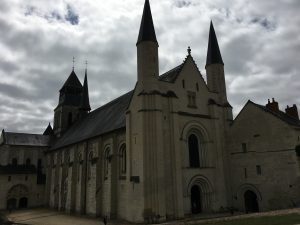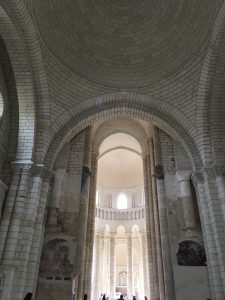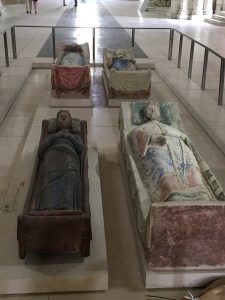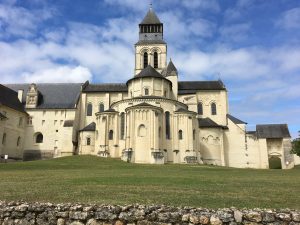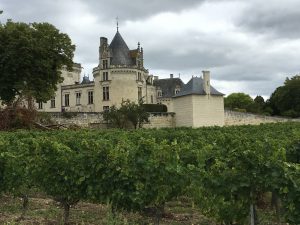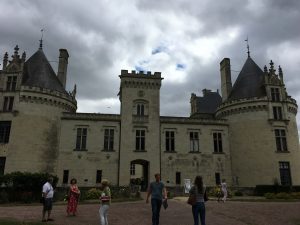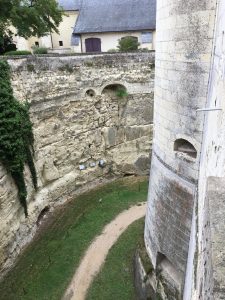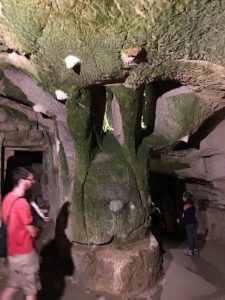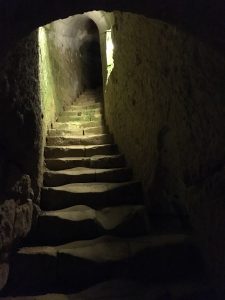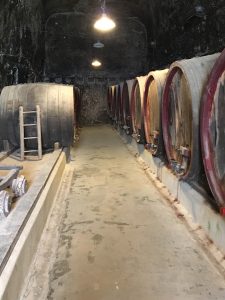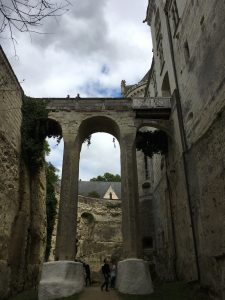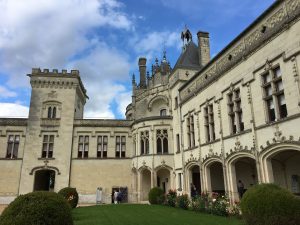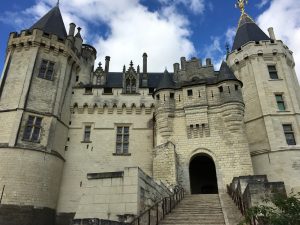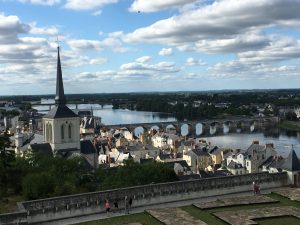The Loire Valley is recognized as a UNESCO World Heritage Site as a cultural landscape of great beauty, containing historic towns and villages, great architectural monuments (the châteaux), and cultivated lands. My short travels today took me south to visit a few of the Grand Saumur sights well advertised in the brochures. Along the way I passed vineyards, heavy with grapes and a couple of goats with horns foraging in a recently plowed field. And then rows of sunflowers just past their bloom, all bowing their large heads in the same direction. There was no one on the narrow roads and it was delightful.
First stop was the Royal Abbaye of Fontevraud, the largest preserved monastic site in Europe. Founded in the 12thC, what made it unique was that it was a mixed order of nuns and monks, but run by the abbesses. It apparently took some time for the monks to accept being led by women, not surprising for the time. It is also known as the resting place for the bodies of several of the Plantagenet royalty — Henry II, Richard the Lionheart (although his heart is in the Rouen catedral and his entrails somewhere else!), and Eleanor of Aquitaine, the woman behind some of the royal inter-family spats in the late 12thC. It was a beautiful abbey church, and much has been done to restore it and he grounds since it served as a prison from 1804-1963. It was this prison that Jean Genet wrote about in his book “Miracle of the Rose”.
A few short km’s away was Chateau de Breze which was built between the 11th and 19thC in the heart of a vineyard by the Dreux-Breze family until passed by marriage to the Colbert family. (Wonder if Stephen is aware). What’s special about it is not the castle itself, which has been added to and renovated for centuries, showing both a Renaissance and neo-Gothic style. What’s amazing is that is has the largest underground fortress in Europe. There’s a network of over 28,000 sq meters of cavities and tunnels dug into the rock which is known as tuffeau and is the stone used for most all the building in this area. The dry moat is over 50 ft deep, with a defensive configuration in the walls of the underground caves. There are ancient wine presses and an area that had been used as a stable. A complete underground world existed. It was dark and chilly, so not to my taste, but the ingenuity and design and detail of the kitchens and sleeping areas was pretty cool.
Back to Saumur and an easy walk to the Chateau de Saumur, which is built on a hill overlooking the river and stands as a sentry over the city skyline. This chateau-palace of the Dukes of Anjou in the 14th and 15thC’s is the last examples of a princely palace built by the Valois dynasty. It was home to the town governors, then a prison, then an arms and ammunition depot. It is now a Museum of France, and renovations continue. The collection is mostly decorative arts and some tapestries and ceramics, but walking through allowed a sense of what it must of been like to be lord over the city — the panoramic views were beautiful.
And that was my day in the Loire Valley.
